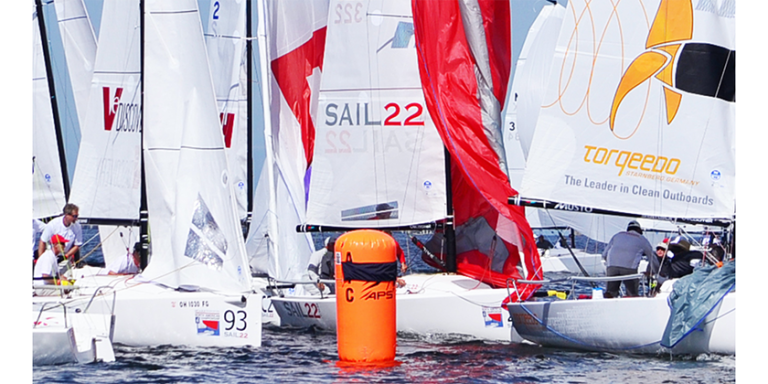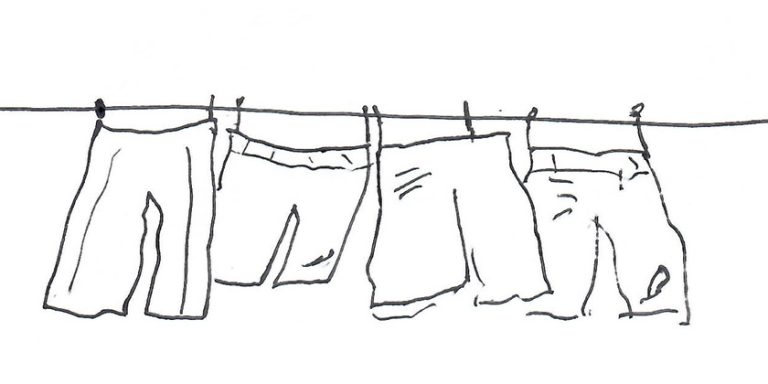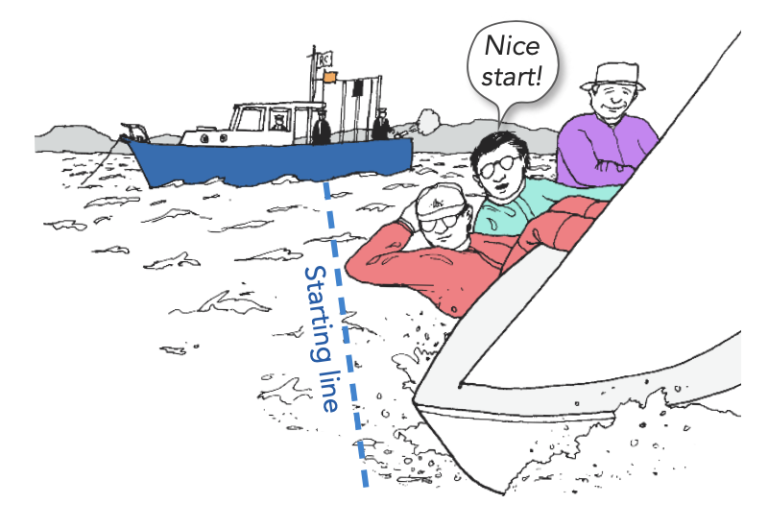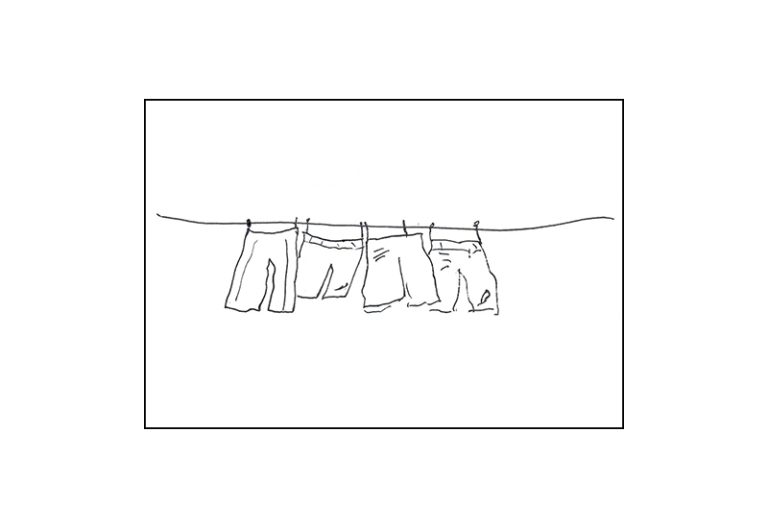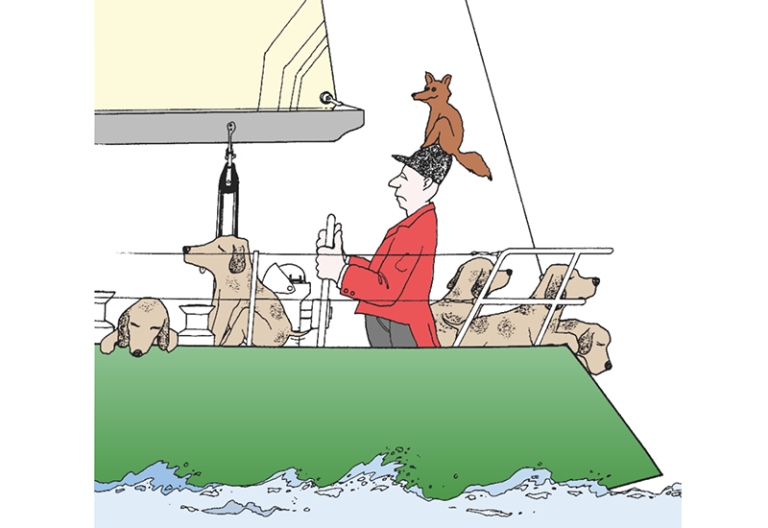Speed & Smarts: Avoid Laylines and Corners
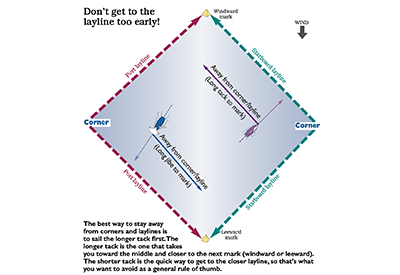
Apr 13, 2022
 It’s impossible to round any mark without getting to the layline first. But the big question, both tactically and strategically, is how far you should be from the mark when you reach that layline. There’s a huge difference between making your final approach from three lengths versus 30 lengths.
It’s impossible to round any mark without getting to the layline first. But the big question, both tactically and strategically, is how far you should be from the mark when you reach that layline. There’s a huge difference between making your final approach from three lengths versus 30 lengths.
As a general rule, it’s smart to avoid getting to laylines too early. The more time you spend on a layline, the more likely you are to face one or more problems that will slow you down:
- You may overstand the mark and sail extra distance. It’s hard to judge the layline when you are far from the mark, so it’s easy to over- stand. Each boatlength you sail past the layline is wasted distance that is lost to every other boat in the fleet. Even if you pick the lay- line exactly, you will overstand if you get lifted, or if you have to tack to clear your air.
- You will lose to other boats if the wind shifts. The layline is a strategic dead-end because once you get there you can no longer play windshifts. If you get headed, you will lose to all the boats that didn’t go to the layline (because they can tack on the header). If you get lifted, you will overstand and many boats that were below you will get lifted up to the mark.
- Other boats may give you bad air. The layline (especially the star- board layline upwind) attracts a lot of company. Unless you are leading the race, if you get to the layline early there’s a good chance that another boat will tack on your wind. If that happens, you either have to sail in bad air all the way to the mark or do two tacks to clear your wind. Either option is slow.
It’s hard to define the ideal time to reach the layline. But if you are in the ‘corner’ of a beat or run (see diagram), that’s probably too early. There are very few times when you will gain by getting to the layline early. In fact, once you get to the layline the best you can usually do is to hold even with other boats – and that happens only if the wind stays perfectly steady and no boats tack on you.
So, it’s generally good to avoid laylines, especially on runs where it’s easy to overstand (see diagram). Here are some ideas on doing this:
- Sail the longer tack first. The ‘longer tack’ is the one where your bow is pointed closer to the wind- ward (or leeward) mark. If you sail on this tack you will automatically be going away from the close layline (see diagram).
- Look for a lane of clear air below the layline. If you are playing the right side of the beat and there are at least several boats ahead of you, don’t go all the way to layline (because they will probably tack on you). Instead, look for a nice lane of clear air below the layline (maybe 8 to 10 boatlengths) and tack to star- board there. Now when boats cross you on port tack, they are more likely to keep sailing to the starboard layline than to tack on you. If they do tack, at least you have room for two tacks to clear your air without overstanding.
- Take smaller headers as you get closer to the layline. In a shifty breeze, tack on the headers to sail on the lifts. Typically, you wait until you are knocked to your median heading, and then you tack. But the closer you are to the layline, the more willing you should be to tack on smaller shifts (to sail toward the middle, away from the layline).
Of course, it’s not always a total disaster to get to the layline early. There are a few times when this might actually be helpful such as when you’re near the front of the fleet and one side is very favored, or you’re near the back of the fleet and need to roll the dice. But more often than not, your chances are better if you avoid laylines and corners.
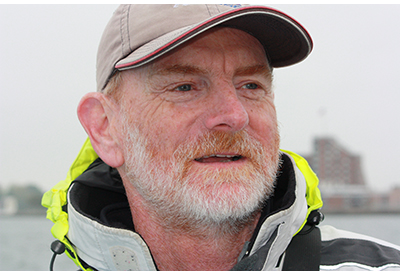 Dave Dellenbaugh is the publisher, editor and author of Speed & Smarts, the racing newsletter. He was the tactician and starting helmsman on America3 during her successful defense of the America’s Cup in 1992 and sailed in three other America’s Cup campaigns from 1986 to 2007. David is also two-time winner of the Canada’s Cup, a Lightning world champion, two-time Congressional Cup winner, seven-time Thistle national champion, three-time Prince of Wales U.S. match racing champion and past winner of the U.S. Team Racing Championship for the Hinman Trophy. He is currently a member of the US Sailing Racing Rules Committee (and was its chairman from 2005-2008).
Dave Dellenbaugh is the publisher, editor and author of Speed & Smarts, the racing newsletter. He was the tactician and starting helmsman on America3 during her successful defense of the America’s Cup in 1992 and sailed in three other America’s Cup campaigns from 1986 to 2007. David is also two-time winner of the Canada’s Cup, a Lightning world champion, two-time Congressional Cup winner, seven-time Thistle national champion, three-time Prince of Wales U.S. match racing champion and past winner of the U.S. Team Racing Championship for the Hinman Trophy. He is currently a member of the US Sailing Racing Rules Committee (and was its chairman from 2005-2008).
You can subscribe to the Speed & Smarts newsletter HERE

